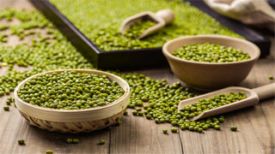In summer, the weather is hot and humid, and people are prone to feeling bloated and uncomfortable in the stomach. At this time, perilla tender leaves can be used as soup for cooking and consumption, which has the effect of promoting qi and stomach.
Perilla is a good food and medicine combination. Fresh perilla leaves have a strong taste and can be used as a cold salad, accompanied by fish and meat for soup; As a traditional Chinese medicine, perilla leaves, perilla stems, and perilla seeds can all be used as medicine. They have a warm aroma, can warm the spleen and stomach, dispel dampness and dispel cold, and are particularly good at detoxifying fish and crabs. What's even more rare is that perilla, as a dual-use medicinal ingredient, is refreshing and fragrant, and very delicious.
In some regions of our country, perilla is also used as a vegetable or tea because it contains volatile aromatic substances such as perilla aldehyde, which have the effects of removing fishy smell, enhancing freshness, and enhancing taste.
Perilla is a plant of the genus Perilla in the family Lamiaceae. A species of perilla produces three medicines: leaves are perilla leaves, stems are perilla stems, and mature seeds are perilla seeds, all of which can be used as medicine.
It is worth noting that not all perilla are purple.
Perilla has significant intra specific differences and can exhibit completely different traits when planted in different regions and natural environments. Although there are differences in morphology, they are all the same plant and can be used as medicine.
In general, the entire leaves of perilla are purple, and pure purple perilla has a strong flavor, making it suitable for making spices. The perilla with all green leaves is called "white perilla". The aroma of white perilla is relatively light, making it suitable as a side dish and served directly with grilled meat. The most common variety in Guangdong is the perilla with green leaves and purple leaves at the bottom, which has a moderate taste and is most suitable as a side dish during cooking. It is also the most common variety of beverage slices.
Perilla has four subspecies, the most common of which is Hui Hui Su. Its leaf edges have deeper teeth and its use is no different from ordinary Perilla.
Traditional Chinese medicine believes that perilla has a pungent taste, warm nature, and belongs to the lung and spleen meridians. It has the function of relieving external heat and dispersing cold, promoting qi and stomach circulation. Commonly used for wind cold syndrome, coughing and phlegm accumulation, bloating in the epigastric cavity, nausea and vomiting, abdominal pain and diarrhea, fetal gas disharmony, pregnancy obstruction, fish and crab poisoning, etc.
The Compendium of Materia Medica states that perilla can "regulate the lower Qi, eliminate the cold in the middle." The Compendium of Materia Medica records that perilla can "relieve muscle inflammation, dispel wind and cold, promote Qi circulation and broaden the middle, eliminate phlegm and benefit the lungs, harmonize blood, warm the middle, relieve pain, calm asthma, prevent miscarriage, detoxify fish and crabs, and treat snake and dog injuries.".
Wind cold and cold
Perilla frutescens is used for people with nasal congestion, runny nose, and head and body soreness caused by external wind and cold. It is used to dispel wind and cold, relieve lung qi, and is often used together with Fangfeng and Qianghuo, such as Su Qiangda Biao Tang in the "Popular Treatise on Cold Damage".
vomit
Perilla can awaken the spleen and stomach by returning to the spleen and stomach meridian, and is used for vomiting caused by disharmony of stomach qi. It can be consumed regardless of cold, heat, or fetal gas invasion. Often used together with Huanglian, it has an anti emetic effect.
asthma
For those who suffer from cough, wheezing, chest tightness, and sparse white phlegm due to lung cold stagnation and loss of control during ascending and descending movements, it can be used to promote lung cold and can also be used for downward thrusting. It is often used in combination with almonds, such as Xingsu Powder in the "Wen Bing Tiao Bian".
Safe abortion
Perilla frutescens is used for those who experience fetal gas reflux and cause bloating and pain in the abdomen. It is often used in conjunction with Angelica sinensis, peony, and Chenpi, such as Perilla frutescens drink in the "Ji Sheng Fang".
Refreshing and Awakening the Brain
Clinically, perilla has been found to have good effects in clearing turbidity, awakening the brain, and opening the mind.
Treating bad breath
When encountering bad breath, foul breath, unpleasant odor, accompanied by symptoms such as thirst, cold drinking, sore mouth and tongue, or dental caries, red rot, swelling and pain, this product can be paired with Huanglian. It can not only remove turbidity and dirt, but also clear the stomach and relieve heat.
Treating fish and crab poisoning
When eating fish and crabs accidentally causes poisoning, symptoms such as chest tightness, abdominal distension, abdominal pain, diarrhea, and vomiting may occur. Perilla can be fragrant, remove impurities, dispel heat and dampness, and can be detoxified by boiling juice alone.
Modern pharmacological research has shown that perilla leaves are rich in volatile oil, perilla aldehyde, limonene and other substances, and have effects such as antiemetic, sedative, antiviral, promoting small intestine peristalsis, and hemostasis. It has good adjunctive therapeutic effects for wind cold, pregnancy cold, chronic gastritis, chronic bronchitis, cervical erosion, or postoperative bleeding of cervical polyps. Japanese scholars have found that high-dose perilla leaves combined with furosemide have the effect of relieving river dolphin poisoning.
Attention: Perilla leaves are usually directly used as medicine after being sun dried. If stored for too long, the volatile oil components will be further lost, so the recommended usage period is generally one year. In addition, the "Compendium of Materia Medica" points out that "diseases belong to yin deficiency, and those who experience cold, heat, aversion to cold, and headache should be cautious not to invest in them. Therefore, it is advisable to accumulate and supplement the disease. It is also not suitable for those who experience vomiting due to rising fire.".
Perilla seed and Perilla stem
The stem (purple perilla stem) and seed (purple perilla seed) of perilla are also used as medicine. Purple perilla stem is known for regulating qi and promoting digestion, while purple perilla seed is good at resolving phlegm and promoting digestion. Due to its consumption of qi and intestines, it is not suitable for pregnant women to consume.
Perilla seed
Suzi is a commonly used medication for treating various cough and wheezing diseases. In theory, the use of qi lowering drugs can lead to the downflow of qi. Pregnant women should be cautious of the risk of abortion when using them. However, the Chinese Pharmacopoeia, Chinese Pharmacology, and previous pharmaceutical works do not explicitly mention the need to ban or use purple Suzi with caution during pregnancy. Therefore, if there is cough and wheezing during pregnancy, it can also be selected based on syndrome differentiation, but when the cough is mild, Perilla leaves should be given priority. Perilla seeds can dissolve phlegm, lower qi, relieve asthma, moisten the intestines, and relieve constipation.
According to the "Records of Famous Doctors", Su Zi is said to be "in charge of the lower Qi, dispelling cold and warming the middle." The "Encyclopedia of Materia Medica" states that Su Zi is a specialized medicine for coughing due to deficiency and fatigue. Its function is to lower Qi, so it is suitable for those with poor chest and diaphragm function. It is also a good medicine for dispelling wheezing, calming cough, and reducing phlegm and promoting Qi flow, along with orange red. However, it is not suitable for those with a nature that is mainly for relieving diarrhea, prolonged coughing due to Qi deficiency, yin deficiency for wheezing and reflux, and spleen deficiency
Perilla stem
The key to dispersing perilla stems lies in regulating qi. Fetal restlessness and abdominal pain can be relieved by regulating qi with perilla stems. Early pregnancy reaction or gestational obstruction, caused by middle energizer qi stagnation, dampness and turbidity obstruction, and poor appetite and vomiting due to gastric qi stagnation, can be treated with Su Gan An Tai Xing Qi and stomach. Mild cases can be brewed with Su stems as a substitute for tea, and Su leaves can also be added during cooking.
Dietary therapy
Perilla ginger jujube water
Ingredients: 10g fresh perilla leaves, 3 pieces of ginger, and 15g red dates.
Method: First, wash the red dates in clean water, remove the date pits, then cut the ginger into slices, shred the fresh perilla leaves, and put them into a pot filled with warm water. Then, put the ginger slices and red dates into the pot and cook over high heat. After the pot is boiling, simmer over low heat for 30 minutes; Remove the perilla leaves, red dates, and ginger slices, then separate the dates and put them back into the pot. Continue to simmer over low heat for 15 minutes.
Effect: Warm the stomach, dispel cold, and aid digestion.
Perilla and Scallion White Drink
Ingredients: 20g fresh perilla leaves, 3 green onion roots, and 5 slices of ginger.
Method: After washing the above medicinal herbs, add 500ml of water and simmer over high heat for 20 minutes before drinking.
Effect: Soothing wind and dispelling cold, and relieving external heat in the middle. It has a good adjunctive therapeutic effect on early symptoms of wind cold, such as headache, nasal congestion, runny nose, and cough.
Suzi Almond Tea
Ingredients: 6g each of purple perilla and almonds, 4g orange peel, and 15g honey.
Method: Crush perilla seeds and almonds into fine powder separately; Cut the orange peel into small pieces and put them together in a tea bag. Put the tea bag into the teapot, brew it with boiling water, cover it and let it sit for 15 minutes before drinking. Add honey before drinking. Take one dose daily and drink it frequently as a substitute for tea.
Effect: Moisturizing the lungs, relieving cough, and resolving phlegm and qi. This tea has the effects of moistening the lungs, relieving cough, and resolving phlegm and qi, especially for those with excessive phlegm, cough, and asthma.
Suitable for people with chronic cough, excessive and viscous phlegm, poor cough and vomiting, chest tightness and asthma. Drinking in winter and spring is especially recommended.
Special attention: It is not suitable for those with spleen deficiency, loose stools, or diarrhea.
Eating this grass often in summer is good for the lungs and spleen!
Release time:2024-06-07 13:37:40
Reading:203
Word Count:10771
Subscribe to email


